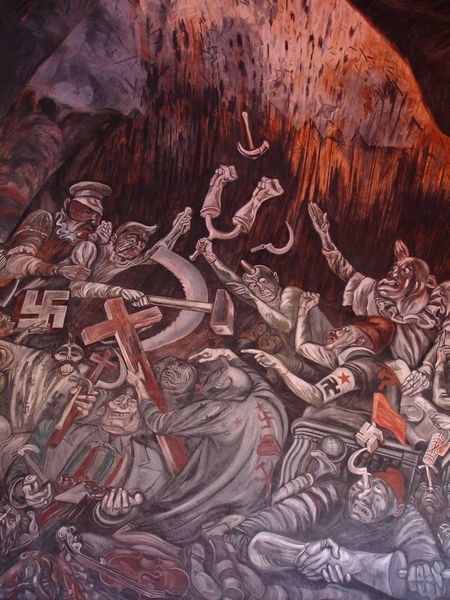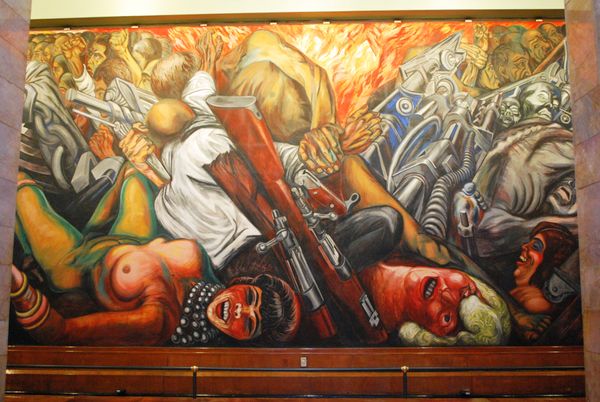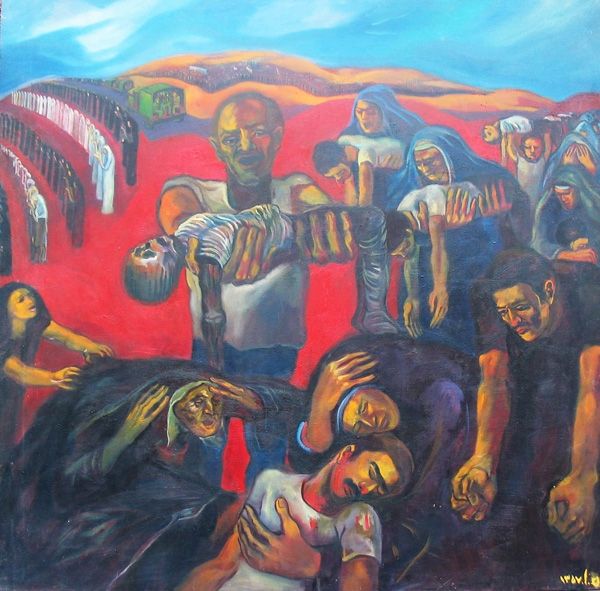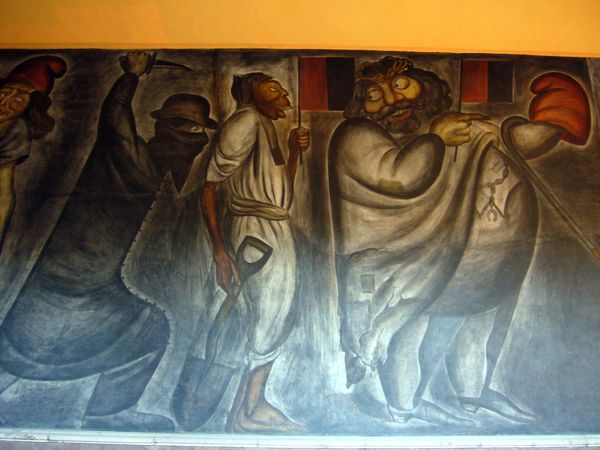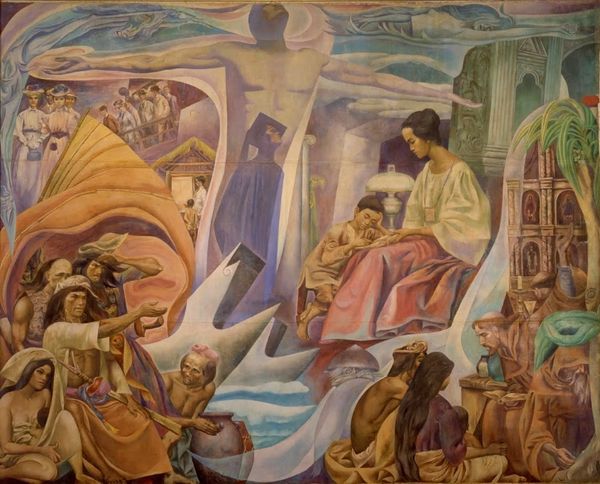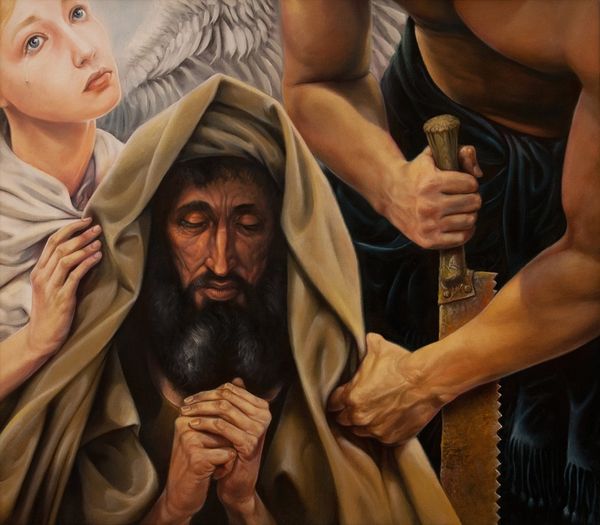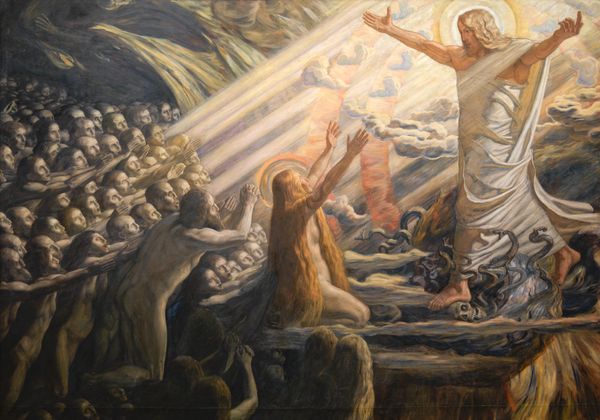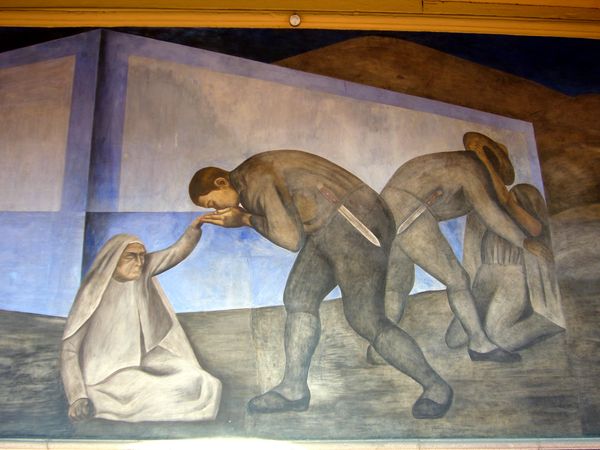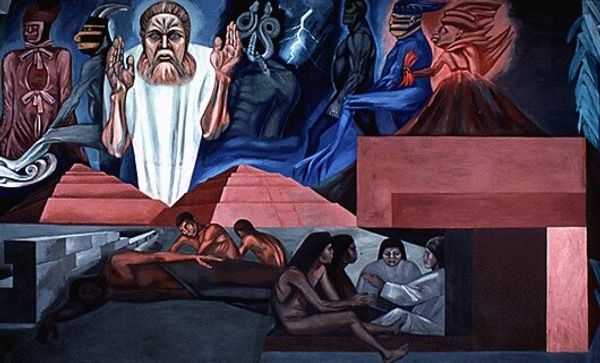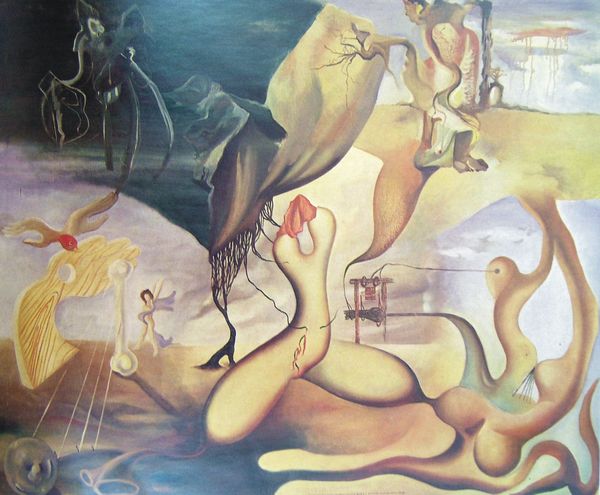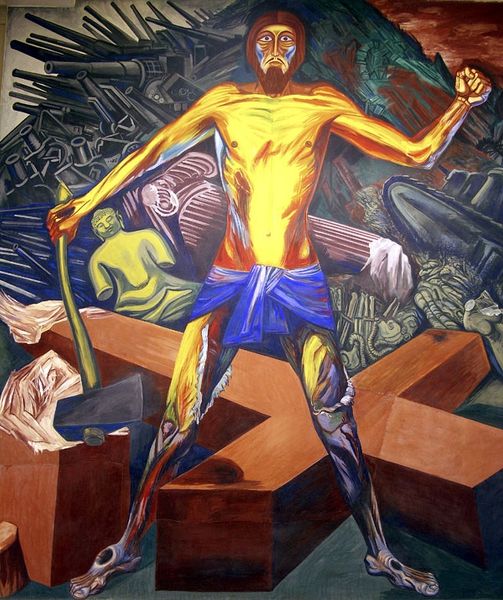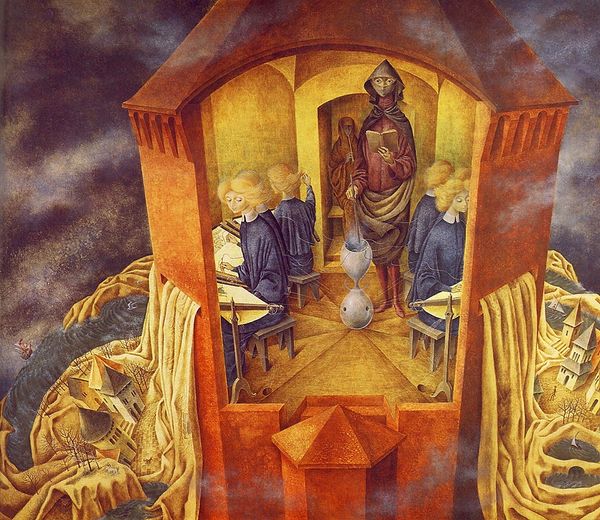
Panel 7. Departure of Quetzalcoatl - The Epic of American Civilization 1934
0:00
0:00
joseclementeorozco
Baker-Berry Library (Dartmouth College), Hanover, NH, US
Copyright: Public domain
Curator: This is Panel 7, "Departure of Quetzalcoatl," part of Jose Clemente Orozco's "The Epic of American Civilization" mural at Dartmouth College, painted in 1934. What's your immediate take? Editor: The figure's posture strikes me instantly—the rigid arm extended, those intense eyes. It's undeniably a visual command, amplified by the churning waves rendered in such stark, cool blues. Curator: Absolutely. Orozco was deeply invested in pre-Columbian history, using murals like this to challenge dominant narratives. He portrays Quetzalcoatl not as a defeated god, but as a figure departing, perhaps in protest, from a world descending into corruption. Editor: The dynamic use of line certainly conveys that sense of descent. Look at the contrast between the static pyramid form on the left and the chaotic, writhing forms surrounding Quetzalcoatl—the hands, the snakes. Curator: Exactly. The pyramid represents the established order, ripe for collapse, while Quetzalcoatl's departure becomes a potent critique of political and spiritual authority. Orozco was painting during a period of significant social upheaval, and his murals became vehicles for those critical ideas. Editor: And there's such potent symbolism. The snakes could represent temptation or deception. Yet they're integrated almost seamlessly with those desperate reaching hands emerging from the flood. The muted colors of the bodies, the strong diagonals -- these amplify the drama, giving us both dread and understanding. Curator: The fresco technique contributes too, doesn’t it? It allowed for this grand scale but demanded swift execution, forcing Orozco to capture raw emotion and decisive gestures. These were crucial given Orozco's commitment to public art and to the social consciousness he wanted to incite. Editor: You can certainly feel the urgency! The lack of intricate detail is part of its power. This work feels like a call to action, doesn't it? Curator: Orozco used the past to comment directly on the present. A powerful testament to the political capabilities of art in the face of societal tensions. Editor: And the formal elements become such powerful vehicles. Those waves of blues and grays crash through the composition in a most dynamic way. Really an emotional use of design.
Comments
No comments
Be the first to comment and join the conversation on the ultimate creative platform.
